About a mile off I-74 in southeast Indiana between Indianapolis and Cincinnati, nestled among rolling green fields populated by a few contented grazing cows and red barns suitable for postcards, you’ll find four historical Catholic churches within a nine-mile radius. St. Paul’s, in Dearborn County, is the oldest Catholic church building in the state. It was consecrated in 1837 by Servant of God Bishop Simon Bruté, spiritual director to America’s first saint, Elizabeth Ann Seton.
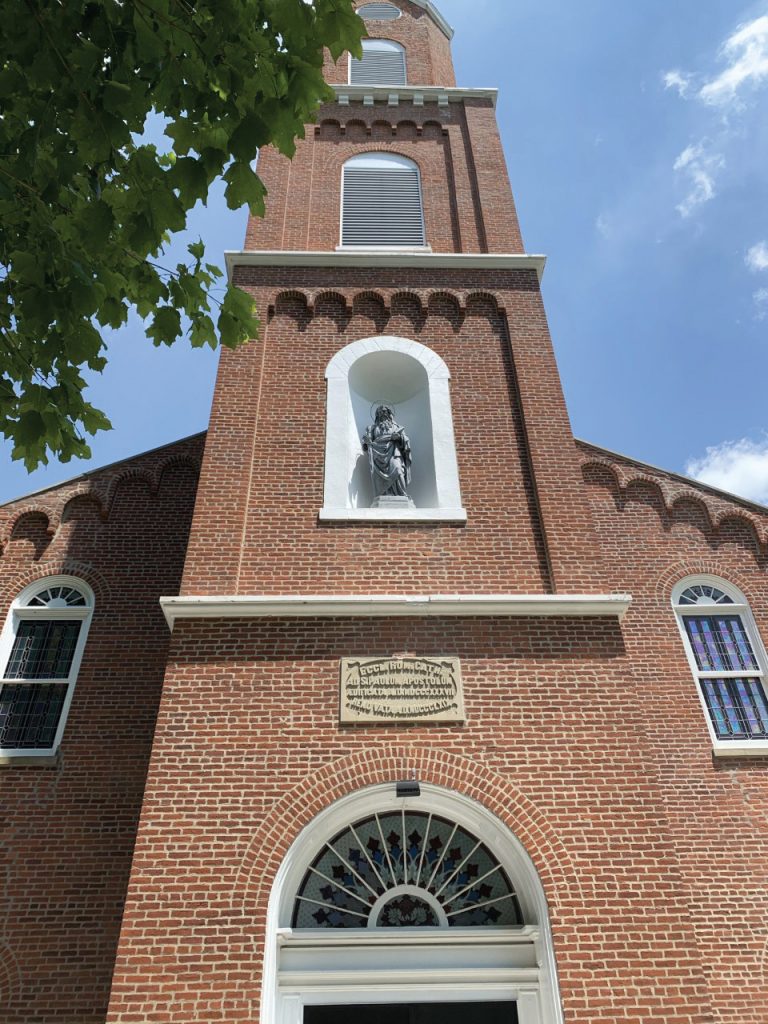
In densely populated urban areas, it wasn’t uncommon to stack multiple Catholic churches in the same neighborhood. The ethnic Catholics who moved to cities to work in factories built those parish communities. Three hours north of Dearborn County in South Bend, for example, the historically Irish parish of St. Patrick’s stands a block from the historically Polish St. Hedwig’s. But I was surprised to learn that in Dearborn County, St. Paul’s, St. John the Baptist’s, St. Joseph’s, and St. Martin’s—each no more than three miles apart—were all founded by German Catholics who established the earliest farming settlements in this pocket of the state.
In a depopulating rural area, merging four historically German parishes with dwindling congregations—as the Archdiocese of Indianapolis ordered in June 2013—seemed unavoidable and advisable. The original plan called for closing and merging parishes throughout 59 counties. This new parish would be named All Saints and would meet at St. John’s in Guilford. The other three church buildings would permanently close.
According to a recent study by the Center for Applied Research in the Apostolate at Georgetown University, 10 percent of parishes in the Midwest and almost 20 percent in the Northeast have closed since the mid-1960s. But the challenges of closing parishes in rural areas are distinct—and often more diverse—than we realize.
In the 1920s the Catholic Church’s “rural problem” was a problem of pastoral care and education for growing populations of Catholics, most of them farmers and homesteaders, in remote locations of the United States. Today the church’s rural problems are different: Among them are widespread poverty, addiction, illness, food deserts, environmental degradation, and the challenges and opportunities of growing immigrant populations. Despite these challenges, the rural church is flourishing in unexpected ways throughout the United States.
A unified vision
Given the shortage of priests and parishioners, a rural “regional parish” makes sense for many communities, says Father Jonathan Meyer, who was appointed pastor at the newly configured All Saints Parish in 2014.
“Pastoring four different parishes with four different parish councils, four different finance committees, and four different Advent programs would be a nightmare for the priest,” he says. But he agreed with parishioners who petitioned the Vatican to keep the doors of their historical church buildings open. He had a vision for how to make the model of one parish, four churches a success.
The language of campus vs. parish is part of Meyer’s vision. He insisted the new vocabulary be included every week in the bulletin until people got used to saying it.
As pastor of All Saints, Meyer celebrates Mass at all four campuses every weekend and daily Mass at the St. John’s campus. He is responsible for four church buildings with 20 related physical facilities and four cemeteries on 74 acres, but he runs only one parish council, one finance committee, one facilities meeting, one cemetery meeting, and one Advent program.
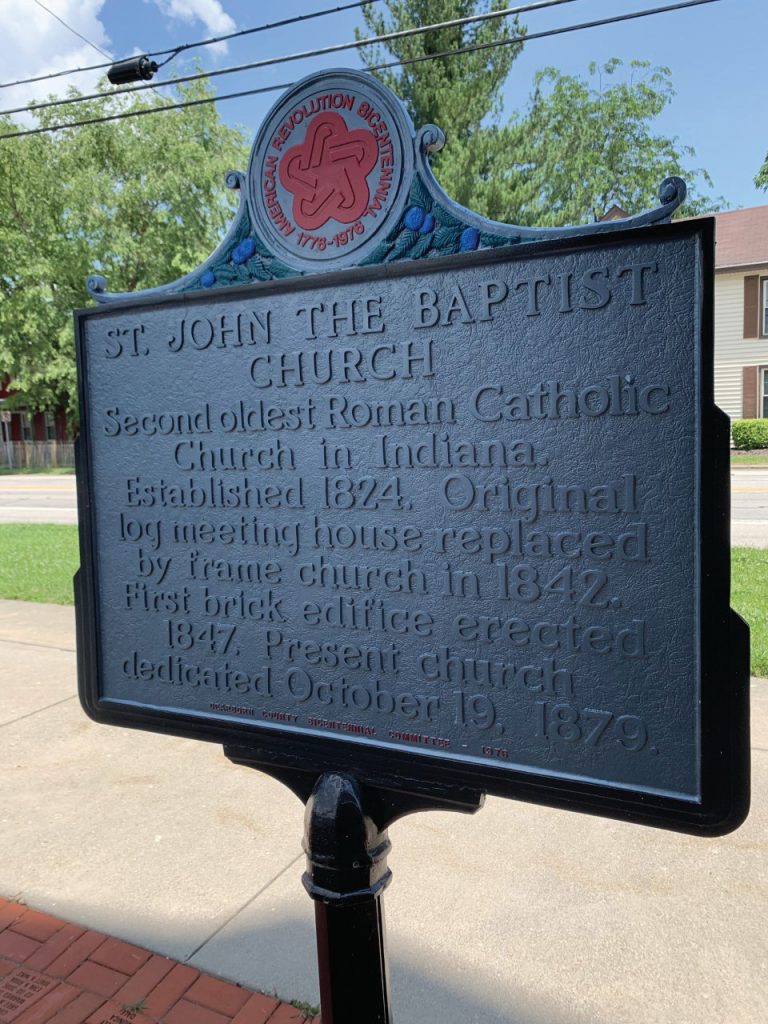
Parishioners register to be members of All Saints, not St. Paul’s, St. John’s, St. Joseph’s, or St. Martin’s, even if they continue to attend Mass in those buildings and even if their grandparents built the church themselves. That was a hard sell, and it took time to get the people on board. “We had to come together and take only the best of what each parish was doing,” Meyer says. Anyone who has served on a parish council can imagine how fraught those discussions must have been.
Meyer’s vision has succeeded in a way that is increasingly rare in the Midwest and Northeast: His congregation’s numbers have gone up. All Saints has grown from 467 registered parishioners in 2013 to 910 in February 2020.
“The pews are packed,” he says.
Even during the novel coronavirus pandemic, daily Masses at the St. John’s campus—carefully socially distanced, masks required—draw around 70 people: enviable numbers for any Catholic church, even those in far more populated areas. Mass is also broadcast on the All Saints YouTube channel, which has more than 26,000 subscribers.
This kind of success story is especially rare among rural parishes. What sets All Saints apart is that it has a lot going for it that many rural parishes lack. For starters, Meyer is an energetic 42-year-old who lives in the community and also coaches the public high school’s cross-country team. Perhaps most important of all, he’s one of them: a white man of German descent who grew up on the south side of Indianapolis.
All Saints remains overwhelmingly white and German. The Catholic families here have deep roots in the land and vast local kinship networks. They also aren’t facing the kind of grinding poverty and environmental degradation experienced by other Catholics in rural areas. When Meyer describes them, he echoes Pope Pius XII’s romantic description of Italian farmers in 1946, whom the pope praised for their “qualities of industriousness, simple and honest living, respect for authority, especially for parental authority, love of country, and loyalty to traditions.”
Changing leadership
Almost 250 miles away from All Saints, near Spencer, West Virginia, lives Jeannie Kirkhope, who has run the Appalachian Catholic Worker Farm for more than 20 years. She is also the co-coordinator of the Catholic Committee of Appalachia, a grassroots network that has worked for justice for the area’s residents since the 1970s. Although she too works and ministers among rural Americans, the daily challenges of Catholics in her community are strikingly different from those in Dearborn County.
The area around Spencer isn’t suited to big farming. Mechanized equipment doesn’t work in steep mountains and narrow valleys. Growing crops or raising livestock is challenging, if not impossible. This was industrial land, and when the small factories closed, Walmart and Roane General Hospital became the primary employers.
Today, priests pastoring in Appalachia must learn the area’s history and needs from scratch, and Holy Redeemer’s parishioners perceive a lack of desire to do so.
Advertisement
Still, the low cost of living and inexpensive land in the 1970s attracted a wave of countercultural hippies and back-to-the-landers, many of them Catholics from urban centers who settled among generations of West Virginia mountaineers. Meanwhile, the hospitals here and in nearby Charleston attracted Filipino doctors via an exchange with the University of Manila. Catholics were suddenly a growing minority in the area. The influx of young families led to a thriving community at Holy Redeemer in Spencer, the local parish near Kirkhope’s farm.
In the Diocese of Wheeling-Charleston, which includes the entire state of West Virginia, each of the 55 counties often has only one Catholic church. Many of these churches were started by the Glenmary Home Missioners, an organization founded in 1939 by Father William Howard Bishop, who was a founding member and president of the National Catholic Rural Life Conference (now Catholic Rural Life). The Glenmary churches—including Holy Redeemer—were considered diocesan missions. But when those missionary churches became official diocesan parishes and the Glenmary priests moved on, “it was a very different feel,” says Kirkhope.
Margaret Arabia agrees. An artist and retired kindergarten teacher who moved here with her husband from Philadelphia in the 1970s, Arabia has been an active member of Holy Redeemer ever since. She and her artist husband created the stained glass windows in the church. She sang in the choir. They raised their five children here.
From the 1970s until 2008, when Holy Redeemer became a diocesan parish, “the Glenmarians were visible in the community,” Arabia says. “They listened. They were slow to introduce change. They were aware of the needs of the community. They took the time to get to know us.”
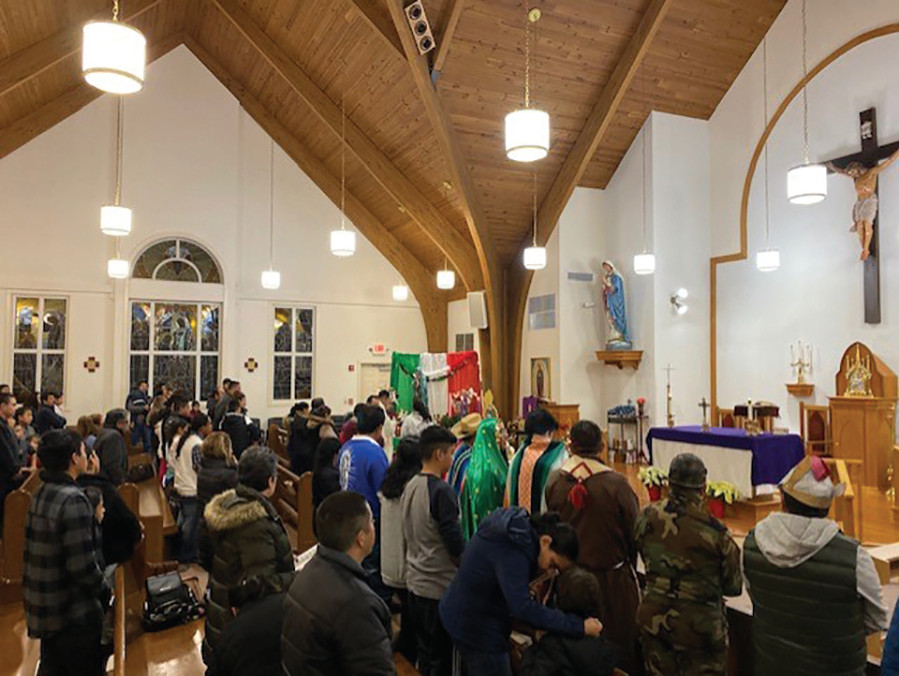
When those missioner priests left, Holy Redeemer saw a succession of diocesan priests with frequent turnover. These priests were often from urban areas or from other countries with no knowledge of the region.
“There’s a real distinct culture in Appalachia,” says Kirkhope. “Previously, diocesan priests and bishops had been homegrown.” Today, priests pastoring in Appalachia must learn the area’s history and needs from scratch, and Holy Redeemer’s parishioners perceive a lack of desire to do so.
“A lot depends on personality,” says Arabia. “Some of [our new priests] distanced themselves from the pastoral council. One priest didn’t know our names after three years. They don’t greet us after Mass. There’s a feeling of merely fulfilling an obligation.”
Most parishes in the diocese share priests with multiple parishes, and, given the distance between the churches the priests serve, parishioners see their pastor only during Mass. Some parishes, such as Holy Cross in Pineville, West Virginia, hold prayer services without priests.
With little to no support from the diocese to address the justice issues that locals face, the work is taken up mostly by laypeople. Holy Cross partners with St. Vincent De Paul and West Virginia University Extension Services to expand the food bank and develop educational backyard garden projects, including courses and resources for raising poultry at home. Kirkhope, via the Catholic Worker, works with local land trusts to connect people struggling with homelessness in cities with vacant land in the county.
Since the Glenmary Home Missioners left Holy Redeemer, the number of registered parishioners has dwindled from 100 families to fewer than 25. Arabia guesses weekly Mass attendance averages around 16 people, most of them elderly. The parish will likely face closure soon.
“When a parish in this diocese closes, people just stop going [to church altogether],” Kirkhope says. But it’s not due to a loss of faith. “We live in food deserts,” she says. “Many of the residents can’t afford gas.” When you have to drive long distances to get groceries, taking another hour-long trip to attend Mass or adoration might be impossible.
In an economy this poor, it would be difficult for even the most committed priest to bring the community together.
Distinct communities
When I moved to Amherst County, Virginia in 2007, after living most of my life in New Orleans and Pittsburgh, I had a difficult time adjusting to rural Catholic life. My parish, St. Francis of Assisi in the town of Amherst, was the only Catholic church in the county. It was built entirely by parishioners, most of whom were retired.
St. Francis, like All Saints in Guilford, Indiana, benefits from a bucolic setting and a mostly older, financially stable congregation, though it is much smaller, with about 125 registered families. But unlike All Saints, St. Francis remains distinct from its sister parish, St. Mary’s, sharing only a priest, who also serves the local prison and, in winter, the Wintergreen Resort in the Blue Ridge Mountains. There is no common vision for programming, education, or liturgy.
“When a parish in this diocese closes, people just stop going [to church altogether],” Kirkhope says. But it’s not due to a loss of faith.
According to Jeff Hansen, assistant to the pastor, St. Francis’ registered parishioners are mostly white and of European descent. St. Mary’s, meanwhile, is a much larger parish with very different demographics. According to Wayne Parent, who runs communication and social media for St. Mary’s and leads the parish’s Migrant Worker Ministry, out of 273 registered families, only about 25 percent are white. Before the pandemic, he estimates around 100 people attended the English-language Mass every weekend, while closer to 300 attended the Spanish-language Mass.
In my seven years there, St. Francis grew slowly, attracting the few Catholics who moved to Amherst to work at Sweet Briar College or the Glad Manufacturing Company. Soon there were a few more young families like mine. We started catechetical programs, and our fellow parishioners instituted eucharistic adoration and built a columbarium on site. Parishioners tended the beautiful grounds and planted a prayer garden.
Meanwhile, St. Mary’s parish numbers are increasing more quickly than those of St. Francis because “our Latino population has grown,” Parent says. “The Anglo population is older, with many retirees and a small number of children. The Latino population is much younger, with many children. Our [religious education] population has averaged 60 to 70 kids. At least 10 kids per year are in [Rite of Christian Initiation of Adults], all generally Latino,” he says.
When Father Daniel Kelly retired as pastor of St. Mary’s and St. Francis, Father Carlos Lerma, a 48-year-old Colombian priest, received the appointment. According to Hansen and Parent, Lerma is well liked by the parishioners at both locations. Hansen attributes the slow, steady growth of the number of parishioners they’ve experienced at St. Francis to Lerma’s personality and good preaching.
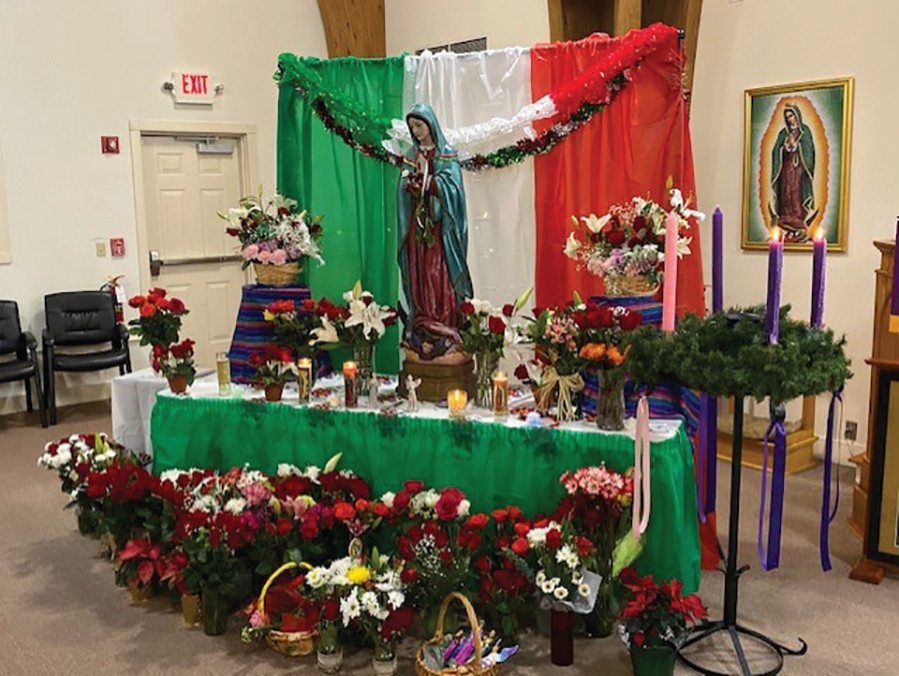
But Lerma has had an even larger impact on the parish numbers at St. Mary’s, Parent says, due to the fact that the Latino/a members feel “very connected” to him. Many of them drive more than an hour, passing other Catholic churches in neighboring counties, to attend Mass at St. Mary’s and enroll their children in religious education. St. Mary’s also hosts an annual two-day Our Lady of Guadalupe celebration that attracts Latino/a Virginians across distances but is only sparsely attended by white parishioners, who mostly live locally.
Any pastor appointed to this region will have to figure out how to better integrate the demographics within St. Mary’s—a problem he won’t face while serving his joint appointment at St. Francis. “When I first came to St. Mary’s and realized the demographics, I was surprised that the two cultural groups were not better integrated,” says Parent. “People who had been going here for 18 years did not know each other.”
It’s not just the language barrier. Parent thinks Southern culture is more comfortable with segregation than Northern culture. He also says that among Latino/as, many of whom are migrant farmworkers and new to the United States, fear is a significant barrier, one complicated by the white parishioners’ lack of knowledge and understanding of the realities of life for immigrants.
“The situation with our government since 2016 has made the fear factor a much greater issue,” Parent says. He declined to ask any Latino/a parishioners to speak with me on the record.
While both communities have been thriving under Lerma as pastor, change is once again coming for St. Mary’s and St. Francis. By the time this story goes to print, Lerma will be reassigned within the diocese and replaced by a Filipino pastor, Father Rogelio Layug Abadano.
The rural parish in pandemic
Among the many challenges that rural parishes face, dwindling numbers are one of the most common. This was true well before the pandemic, but it remains unclear how many will be able to survive the lockdowns.
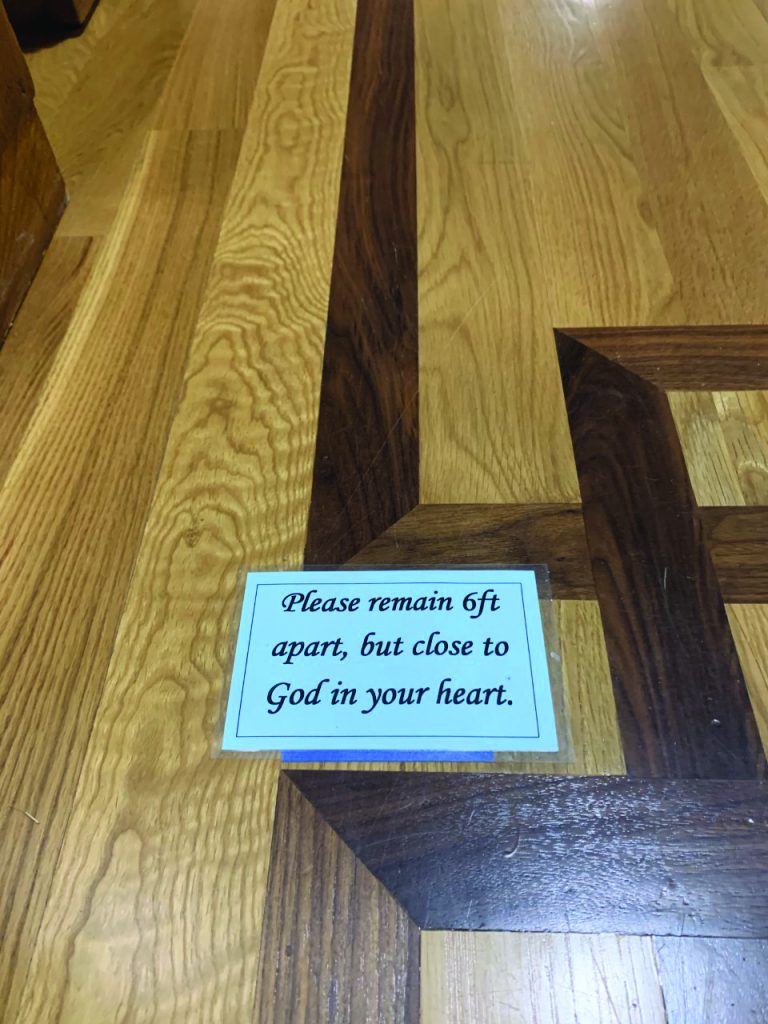
“Things were already bad,” Father Jonathan Meyer wrote in the June 28 edition of All Saints’ weekly bulletin. “Many had lost the faith prior to COVID-19 and were hanging on by a thread. The stopping of all public Masses just sealed . . . the deal.”
The barriers that Meyer lists to resuming Mass attendance range from the personal to the practical to the theological. He thinks too many Catholics have felt abandoned by God and their churches during the pandemic. Aging clergy have not used technology to reach Catholics where they are—online. And bishops and priests have failed to emphasize the Eucharist as the center of the parish community.
Meyer says that the day he found out Masses would stop during the pandemic, “we decided to go hard-core.” That meant streaming daily Mass and two hours of adoration online every day. Meyer did online house blessings, blessings of mothers and fathers and children, and blessings of health care workers.
“We tried to make Mass as beautiful online as it would be in person,” he says. He even lights incense.
Now that Mass attendance is again permitted in Indiana, he says 75 percent of the parishioners have come back.
Too many Catholics have felt abandoned by God and their churches during the pandemic.
In central Virginia at St. Mary’s and St. Francis, the main concern during the pandemic has been for the aging congregation and the migrant population. The two church communities support a food pantry and more than 300 migrant workers in Nelson County, many of whom are in the county only from February to November each year.
“We have had great results soliciting donations and funds for the migrant workers but little to no results in soliciting for more people to work in the ministry,” says Wayne Parent. “Before COVID-19 we visited the camps they live in. Since then, nothing.”
At my previous parish in Virginia, Father Carlos Lerma has reached out to parishioners by phone and has recorded video messages tailored for the individual parishes and posted in their respective Facebook groups. Eucharistic ministers provide communion for the housebound and those in nursing homes.
“Fewer people are attending Mass since the pandemic, obviously,” Jeff Hansen says. Yet he is confident the community will return as safety permits.
Meanwhile, in Spencer, West Virginia, Margaret Arabia says that since the onset of the pandemic, no one from the parish has contacted her or her husband. “The Council on Aging has called,” she says. “Our priest has never called.” The parish’s Facebook page has no posts.
Now that Masses have resumed, “it would probably be much more pleasant to go to St. Agnes in Charleston,” Arabia admits. She gives voice to the anger and grief of those who will face the closings of the rural churches they built from the ground up: “But damn it, this is my church.”
This article also appears in the September issue of U.S. Catholic (Vol. 85, No. 9, pages 26-30). Click here to subscribe to the magazine.
Images: Courtesy of Jessica Mesman


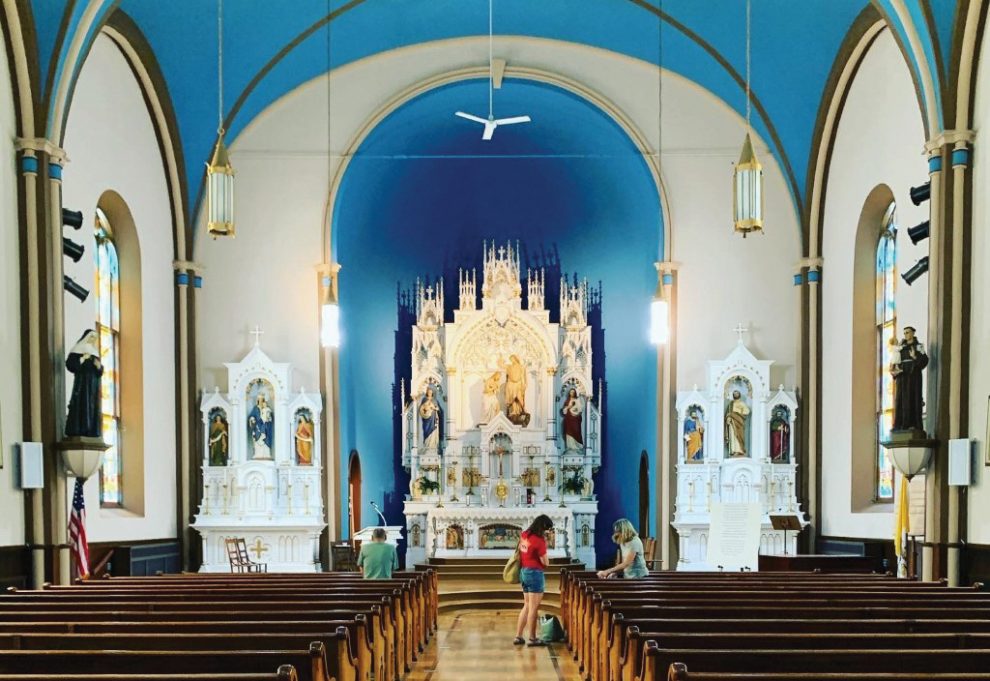





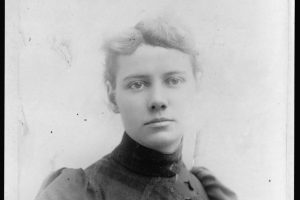






Add comment